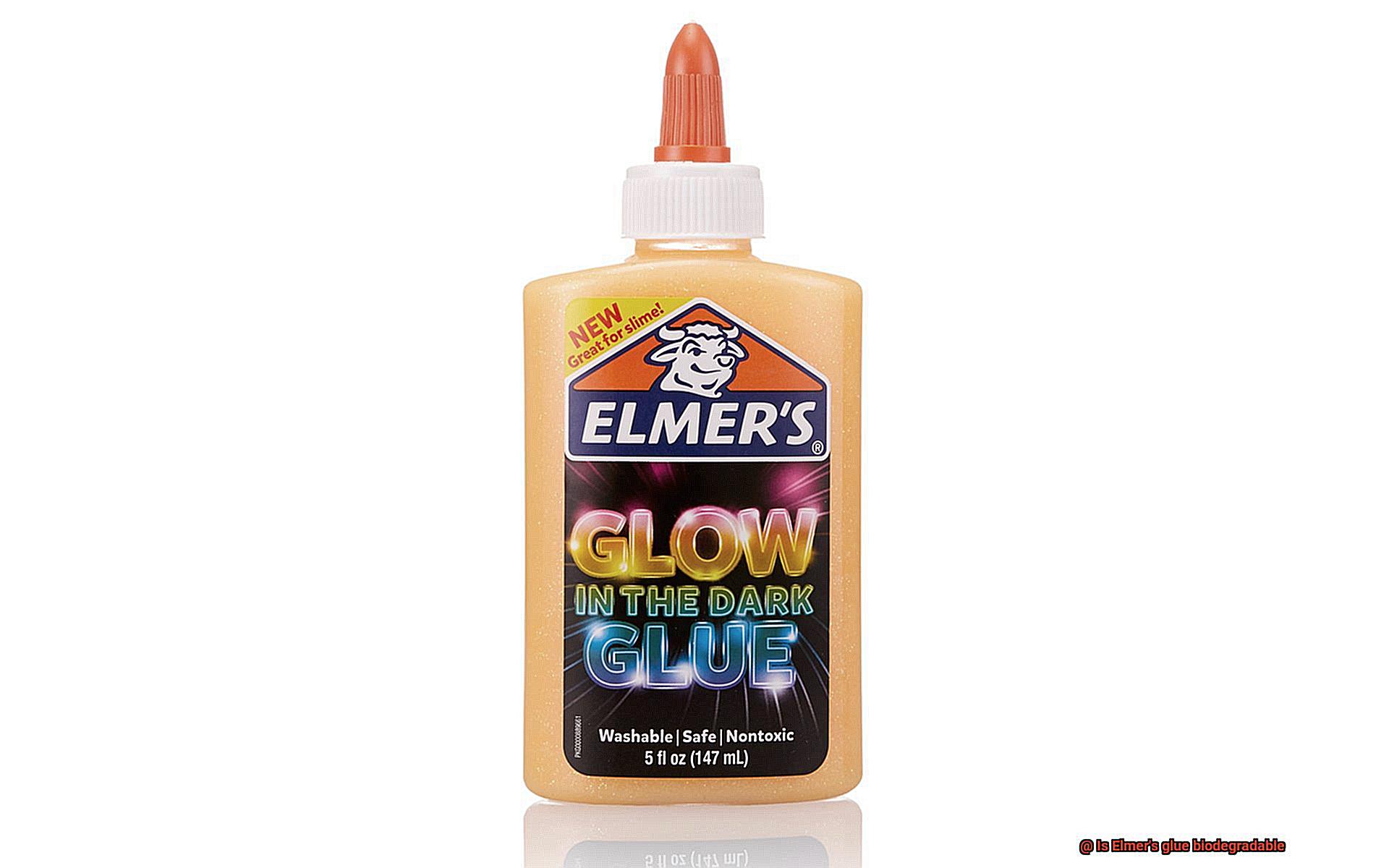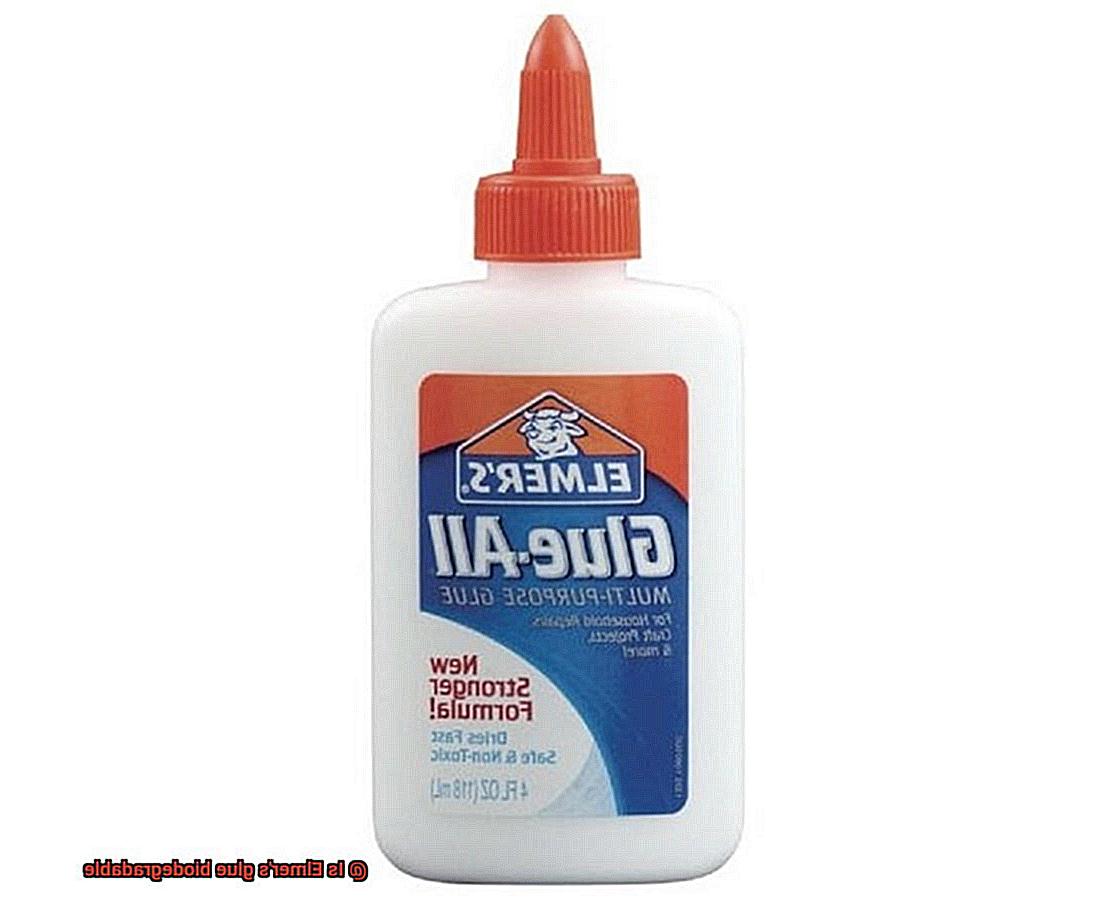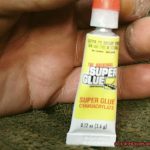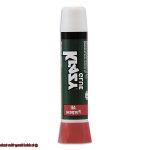Ever pondered the fate of Elmer’s glue, that childhood staple for all things sticky? Well, today we’re embarking on a thrilling journey into the realm of adhesive wonders to uncover whether this beloved glue is biodegradable.
Brace yourselves for an exploration into the wild world of sticky substances, where we’ll unveil the truth about Elmer’s glue and its potential impact on our environment. Get ready to discover if our DIY masterpieces dissolve into oblivion or stubbornly linger in nature’s embrace.
So grab your lab coats and join us as we unravel the mystery of Elmer’s glue and its true allegiance to Mother Nature.
Components of Elmer’s Glue
Contents
In this article, we will take a closer look at the components that make up Elmer’s glue, exploring the science behind its bonding capabilities. Get ready to dive into the fascinating world of this popular adhesive.
Water: The Foundation of Elmer’s Glue
At the core of Elmer’s glue lies its primary component – water. This natural substance plays a vital role in the structure of the adhesive. As water slowly evaporates when exposed to air or heat, it leaves behind a solid adhesive that securely bonds materials together. Water acts as the foundation upon which Elmer’s glue builds its adhesive strength.
Polyvinyl Acetate (PVA): Powering the Adhesion
Powering Elmer’s glue’s strong bonding properties is polyvinyl acetate (PVA). This synthetic polymer creates a robust bond as it dries, enabling effective joining of different materials. While PVA itself is not biodegradable, it undergoes a process called hydrolysis over time. When water molecules interact with PVA’s polymer chains, they cause them to break apart into smaller components, aiding in its degradation.
Additives: Enhancing Performance and Shelf Life
Elmer’s glue also incorporates various additives that enhance its performance and prolong its shelf life. These additives include preservatives, thickeners, and stabilizers. Preservatives prevent mold and bacterial growth, ensuring that the glue remains usable for longer periods. Thickeners control viscosity, making application easier and improving adherence. Stabilizers maintain consistency and quality over time, preventing degradation or changes in performance.
Environmental Considerations
While Elmer’s glue contains non-biodegradable components like PVA and certain additives, it remains relatively safe for the environment when used responsibly. The small amount of PVA present in the glue is unlikely to have significant adverse effects when used as intended. Furthermore, Elmer’s glue is water-based, allowing for effortless cleanup with water and avoiding the release of harmful fumes or toxins during application.

Biodegradability Explained
Biodegradability is the ability of a substance to naturally break down and be absorbed by the environment over time. When it comes to glue, such as Elmer’s glue, we often think about its stickiness and how it holds things together.
But have you ever wondered what happens to glue after we’re done using it? Is it biodegradable? Let’s dive into the world of Elmer’s glue and explore its biodegradability.
Elmer’s glue, like many other glues, is primarily made up of a synthetic polymer called polyvinyl acetate (PVA). Synthetic polymers are known for their resistance to natural degradation processes because they consist of long chains of molecules that don’t break down easily. However, PVA is water-soluble, meaning it can dissolve in water. But this doesn’t necessarily mean it’s biodegradable.
The biodegradability of PVA depends on various factors such as environmental conditions, microbial activity, and the presence of specific enzymes that can break down the polymer. Research has shown that certain bacteria and fungi have the ability to degrade PVA under specific conditions. However, the rate at which PVA biodegrades can be relatively slow compared to other biodegradable materials.
It’s important to consider that Elmer’s glue contains additional ingredients like preservatives and stabilizers. These additives help prolong the lifespan of the glue and prevent it from breaking down easily in the environment. While they enhance the performance of the glue, they may also limit its overall biodegradability.
So, is Elmer’s glue biodegradable? The answer is not straightforward. While PVA has the potential to biodegrade under certain conditions, the presence of additives in Elmer’s glue may limit its biodegradability.
Is Elmer’s Glue Biodegradable?
The question of whether Elmer’s Glue is biodegradable is a common one, especially considering its widespread use for various projects. To understand the answer, let’s delve into the world of glue and its biodegradability.
Biodegradability refers to a substance’s ability to naturally break down in the environment, thanks to microorganisms like bacteria and fungi. These tiny organisms work their magic by breaking down materials into simpler compounds that can be recycled back into nature without causing harm or leaving behind pollutants.
Now, let’s explore Elmer’s Glue. The main ingredient in this popular adhesive is polyvinyl acetate (PVA), a synthetic polymer responsible for its stickiness. Unfortunately, PVA is not naturally biodegradable because it’s a synthetic substance that doesn’t readily break down in the environment. It’s a bummer, isn’t it?
But don’t lose hope just yet. Elmer’s Glue does contain other ingredients that may contribute to its overall biodegradability. For instance, it contains a significant amount of water, which can act as a medium for microorganisms to thrive and break down organic materials. So while the PVA itself may not biodegrade, the presence of water in Elmer’s Glue could help facilitate its breakdown over time.
Additionally, Elmer’s Glue may include small amounts of additives like preservatives and stabilizers. Although these additives may not directly impact the biodegradability of the glue, it’s important to consider their presence when assessing its overall environmental impact.
However, it’s crucial to note that the biodegradation process of Elmer’s Glue may be slow and depend on specific environmental conditions. Factors such as temperature, moisture, and the presence of microorganisms all play a role in determining how quickly a substance can biodegrade.
In summary, Elmer’s Glue, with its primary ingredient of PVA, is not naturally biodegradable. Nevertheless, the presence of water and potential additives in the glue could contribute to its overall breakdown over time. It’s essential to dispose of Elmer’s Glue properly and consider alternative adhesive options if biodegradability is a significant concern.
Impact on the Environment
Today, we embark on a journey into the world of Elmer’s Glue to unravel its impact on our precious environment. Whether you’re a parent assisting your children with school projects or an imaginative soul exploring various crafts, it’s critical to comprehend how our beloved adhesive affects Mother Earth.
The Production Process:
Let us commence by delving into the production process of Elmer’s Glue. At its core lies polyvinyl acetate (PVA), a synthetic polymer derived from petroleum. Unfortunately, the extraction and processing of petroleum contribute to air and water pollution, along with greenhouse gas emissions that exacerbate climate change. Moreover, various chemicals and solvents employed during production may pose threats to both human health and the environment.
Environmental Efforts:
Yet, amidst this gloom, a ray of hope emerges. Elmer’s Glue has taken commendable measures to curtail its environmental impact. They have implemented practices to diminish waste generation, enhance energy efficiency, and reduce emissions during production. While room for improvement remains, it is heartening to witness companies striving for eco-friendliness.
Disposal Dilemma:
When it comes to disposing of Elmer’s Glue, things get stickier. This adhesive, in its original form, resists biodegradation. Consequently, if it finds its way into landfills or any other environment, it refuses to break down naturally over time. These circumstances raise concerns about its potential contribution to landfill waste accumulation and pollution. Thus, adhering to local waste management guidelines becomes crucial when disposing of unused or expired glue.
Eco-Friendly Alternatives:
For conscientious individuals seeking greener options, fret not. There exist alternative glues crafted from natural ingredients such as plant starches or casein (a protein found in milk). These biodegradable glues are designed to decompose naturally over time, mitigating their impact on the environment. Therefore, contemplate switching to these eco-friendly alternatives for a guilt-free bonding experience.
Proper Disposal of Elmer’s Glue
Today, we embark on a journey to uncover the secrets of proper disposal methods for Elmer’s glue. Join me as we explore eco-friendly alternatives and responsible ways to bid farewell to our trusty adhesive companion.
Let’s begin with the basics. If you find yourself with unused Elmer’s glue in good condition, consider donating it to schools, art centers, or other organizations. By doing so, not only do you reduce waste, but you also give others the chance to unleash their creativity.
Dried Glue: Time for a Clean Break
What about that dried-up glue lurking at the bottom of your craft drawer? Fear not. You can safely dispose of it in your regular household trash. Simply seal it in a bag or container to prevent any potential mess or leakage.
Liquid Glue: Solidify and Say Goodbye
Now, let’s tackle liquid Elmer’s glue. To dispose of it properly, we must first solidify it. Grab some wax paper or aluminum foil and spread the glue on a non-porous surface. Allow it to dry completely. Voila. Once solidified, peel off the glue and toss it in the regular trash.
Recycling: A Tricky Path
Now, here comes the tricky part. Elmer’s glue bottles are often made from plastic resins that are not easily recyclable in curbside programs. But fret not. Check with your local recycling facility to see if they accept these types of plastic containers.
Hazardous Waste Disposal: Handle with Care
In certain cases, such as dealing with a large quantity of Elmer’s glue or if it contains hazardous components, it may be necessary to dispose of it as hazardous waste. Seek guidance from your local environmental agency or waste management facility to ensure proper disposal methods are followed.
Conclusion:
Now armed with the knowledge of how to properly bid farewell to Elmer’s glue, you can let go of your trusty adhesive friend in an environmentally responsible way. Remember, these guidelines are specific to Elmer’s glue products, so be sure to consult the label or manufacturer’s instructions for different types of glues.
Let’s take a stand for responsible gluing and keep the craft world a little greener.
Eco-Friendly Alternatives to Elmer’s Glue
Let’s dive in and discover fantastic options that will help reduce our environmental impact.
First up, let’s talk about homemade glue. This easy-to-make alternative requires just flour and water to create a paste-like consistency. Not only is this glue biodegradable, but it’s also safe for children to use. So, why not try making your own glue for a fun and sustainable project?
Next on our list are plant-based glues. Made from natural plant materials like starch or cellulose, these environmentally friendly options are biodegradable and effective. Whether you need liquid glue, stick glue, or glue pens, plant-based glues adhere well to materials like paper, cardboard, fabric, and wood. They’ve got you covered for all your art projects and repairs.
But wait, there’s more. Some companies offer eco-friendly glues made from recycled materials or with minimal environmental impact. These glues come in recyclable packaging and have a lower carbon footprint. Look out for these options if you want an alternative that ticks all the boxes of sustainability and effectiveness.
When choosing your eco-friendly alternative to Elmer’s glue, consider factors like intended use, durability, and drying time. Experiment with different alternatives to find the one that suits your needs best.
Benefits of Using Eco-Friendly Adhesives
Eco-friendly adhesives, also known as green or sustainable adhesives, offer a multitude of benefits that make them the ideal choice for those looking to protect the environment and improve the health of both people and the planet. From biodegradability to low VOC content, these eco-friendly alternatives provide a range of advantages that set them apart from traditional adhesives.
First and foremost, eco-friendly adhesives are biodegradable. Unlike their chemical-laden counterparts, these adhesives are made from natural and renewable materials that easily break down in the environment. This not only reduces waste but also ensures a cleaner planet for future generations.
In addition to being biodegradable, eco-friendly adhesives contribute to cleaner air and water. By choosing these adhesives, you are reducing your carbon footprint and helping to preserve the quality of our ecosystems. Traditional adhesives often release toxic substances into the air or water, leading to pollution and environmental degradation. Eco-friendly adhesives, on the other hand, do not release harmful chemicals, making them an environmentally responsible choice.
Furthermore, eco-friendly adhesives have significantly lower or no VOC content. Volatile organic compounds (VOCs) are harmful chemicals found in many traditional adhesives that can lead to respiratory issues and allergic reactions. By using eco-friendly adhesives with low VOC content, you can ensure a safer and healthier environment for both yourself and those around you.
Despite their eco-friendly nature, these adhesives do not compromise on performance. They offer strong bonding properties and can be used in a variety of applications, ranging from crafts and DIY projects to industrial manufacturing. So whether you’re working on a small-scale project or a large-scale production, eco-friendly adhesives have got you covered.
Choosing eco-friendly adhesives also supports sustainability initiatives. Many companies are now prioritizing greener practices and reducing their environmental impact. By using these adhesives, you are not only making a positive impact but also encouraging more companies to follow suit and adopt sustainable practices.
Furthermore, eco-friendly adhesives are often packaged and manufactured using recycled or recyclable materials. This helps reduce waste and promotes the circular economy by closing the loop on resources. By choosing eco-friendly adhesives, you are actively contributing to the reduction of waste and supporting a more sustainable future.
While eco-friendly adhesives may have a slightly higher price point initially, they provide better long-term value. These durable and long-lasting adhesives reduce the need for frequent reapplication or repairs, ultimately saving you money in the long run.
zumPCy2wuKg” >
Conclusion
In conclusion, Elmer’s glue falls short when it comes to biodegradability. Its main ingredient, polyvinyl acetate (PVA), is a synthetic polymer that stubbornly resists breaking down in nature’s grasp. However, this doesn’t mean all hope is lost for Elmer’s glue.
Although PVA may not biodegrade naturally, it does possess a glimmer of hope. It is water-soluble, meaning it can dissolve in water over time, potentially aiding in its gradual degradation. But don’t be too quick to celebrate just yet.
Elmer’s glue contains more than just PVA. It also boasts additives like preservatives and stabilizers that enhance its performance and shelf life. Unfortunately, these very additives may hinder its overall biodegradability. A bittersweet reality for those seeking an environmentally-friendly adhesive.
But fear not. While Elmer’s glue may not play well with nature, it still manages to maintain a relatively safe relationship with the environment when used responsibly. Its water-based formula allows for easy cleanup with nothing more than a splash of H2O, sparing us from harmful fumes or toxic emissions during application. However, proper disposal according to local waste management guidelines remains crucial.
For those yearning for greener alternatives to Elmer’s glue, you’re in luck. There exists a world beyond synthetic polymers and chemical additives. Homemade glues crafted from humble ingredients like flour and water are both biodegradable and gentle on Mother Earth. Plant-based glues derived from natural materials such as starch or cellulose offer similar eco-friendly benefits without sacrificing effectiveness.
But wait, there’s more. Some companies have taken up the noble cause of environmental responsibility by offering adhesives with minimal impact on our delicate ecosystem. These eco-friendly glues are often made from recycled materials or packaged in recyclable containers—small steps towards preserving our planet.
By choosing these earth-conscious alternatives, we not only reduce waste but also contribute to cleaner air and water. These eco-friendly adhesives often have lower or no volatile organic compound (VOC) content, ensuring a safer and healthier environment for all. Plus, they support sustainability initiatives by utilizing recycled materials or packaging.
So, while Elmer’s glue may not be the poster child for biodegradability, don’t lose hope. There are adhesive options out there that prioritize environmental responsibility without sacrificing performance.






